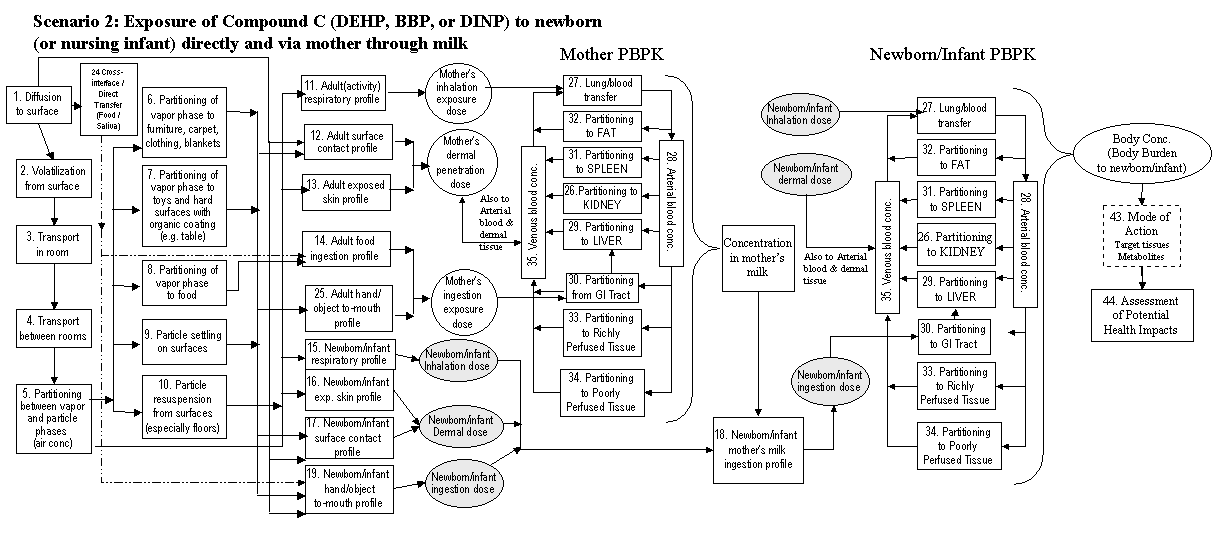
![]() 4.0 Scenarios
4.0 Scenarios
4.1 Life Stages
4.2 Scenario 1
Model Flow Diagram 1
4.3 Scenario 2
Model Flow Diagram 2
4.4 Scenario 3
Model Flow Diagram 3
4.5 Scenario 4
Model Flow Diagram 4
4.6 Process Flow
4.7 Gap Analysis
the mapping between the models and the process numbers.
Select a model or model description from the table below (ordered alphabetically),
and the corresponding processes on the diagram will be highlighted.
| Newborn DEHP Exposure |  |
| CONSEXPO | |
| CONTAMW | |
| Dust resuspension | |
| Partitioning between vapor and particle phase | |
| PBPD for human | |
| PBPK for human | |
| THERdbASE |
Notes
- Compound C: DEHP: diethyl hexyl phthalate
- Metabolite: Not Known
- Mode of Action: Not Known
- Data gap: No models for #5 partitioning between vapor and particle phase or #10 particle resuspension from surfaces (especially floors)
- Data gap: newborn and nursing infant PBPK or PBPD for DEHP
- Compound C: BBP: butyl benzyl phthalate
- Metabolite: Not found during literature search
- Mode of Action: Not found during literature search
- Data gap: No models for #5 partitioning between vapor and particle phase or #10 particle resuspension from surfaces (especially floors)
- Data gap: nursing infant PBPK for BBP
- Compound C: DINP: diisononyl phthalate
- Metabolite: Not Known
- Mode of Action: Not Known
- Data gap: No models for #5 partitioning between vapor and particle phase or #10 particle resuspension from surfaces (especially floors)
- Data gap: newborn and nursing infant PBPK for DINP
Return to Process Framework list.
